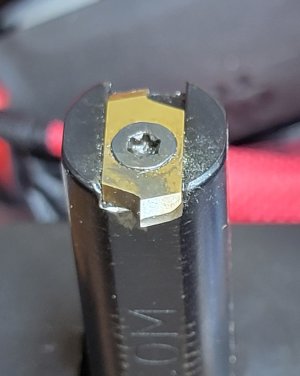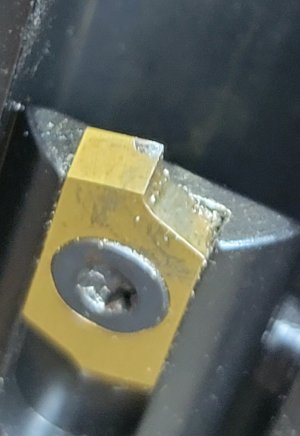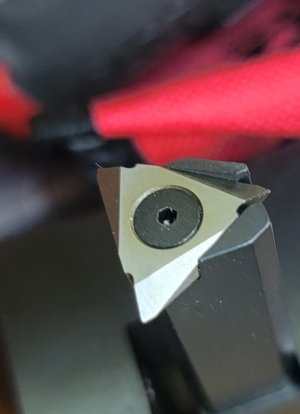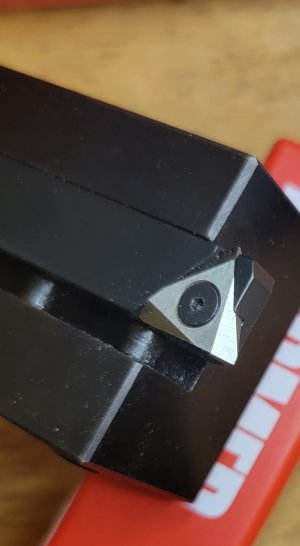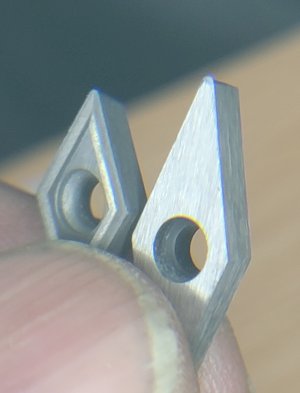This is as good a place as any to put this question because the subject is quite relevant.
But this new question is strictly about carbide inserts for threading.
First of all, I have to apologize to
@thestelster who already gave me some advice on this subject, but I've lost it. Can you remind me what holders and what inserts you use for threading Stel?
Over the course of the last 6 months I've been busy reading carbide references and learning about what everything means. I recently made a giant step forward when I realized that all the dimensions are usually imperial but often have metric equivalents.
Thus a metric TNMG160404 is the same as (and interchangeable with) an imperial TNMG331. It's a huge source of confusion lifted off of my back.
Yes, I know that is not universally true and that some inserts are really metric but labelled as imperial. It doesn't seem to matter though. I now understand the interchangeability better than I did and I can actually look at a catalog and have a general sense of what I'm looking at. Until recently it was all just Greek
I have purchased TNMG, WNMG, and CNMG holders with anvils as well as steel, stainless, & aluminium inserts all with 0.4mm / 0.016 / 1/64th tips. I may get a few inserts with bigger tip radiusses for finishing, but I had to start someplace. Maybe I'll use David 's US source to get 3 of those.
Unfortunately, the delay caused by learning insert lingo has caused me to misplace the recommendations
@thestelster gave me for holders and inserts for threading. I am anxious to get some and try them.
I'll happily accept advice from others too.
So how does that relate to this thread?
Well, my theory is that carbide usually requires a larger bite to work properly and I am thinking that this requirement might not be compatible with what happens on the 29.5 degree face which is only shaving a wee bit on each pass. In this case, I'm thinking a 90 degree plunge cut might be WAAAY better.
However, now that I know I can sharpen carbide and/or use sharp inserts for aluminium on steel, maybe that isn't true either!
For now, all I can ask of you guys is your advice. As soon as I can get and try a carbide threading holder and inserts, I will try it myself. Doing is believing as they say.
Advice?

